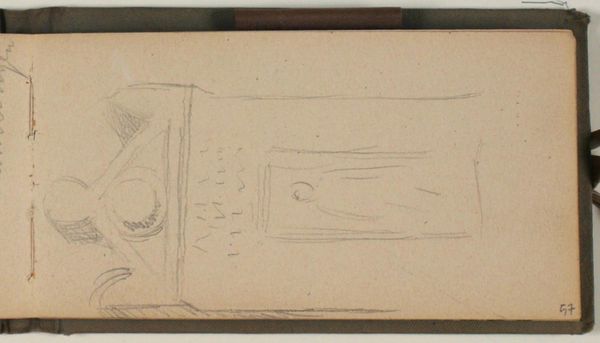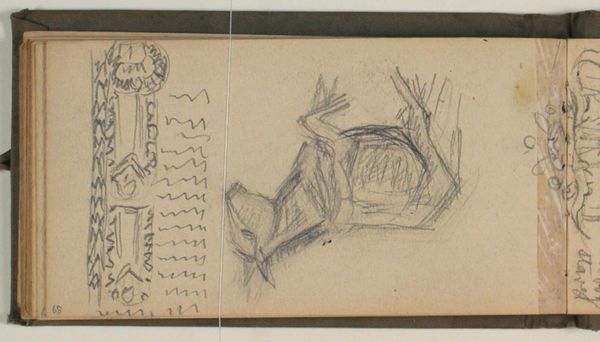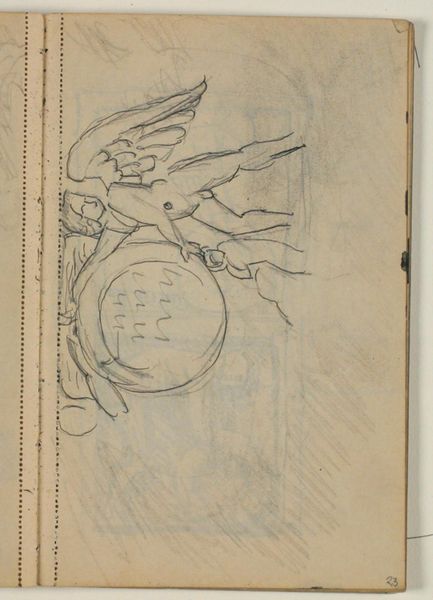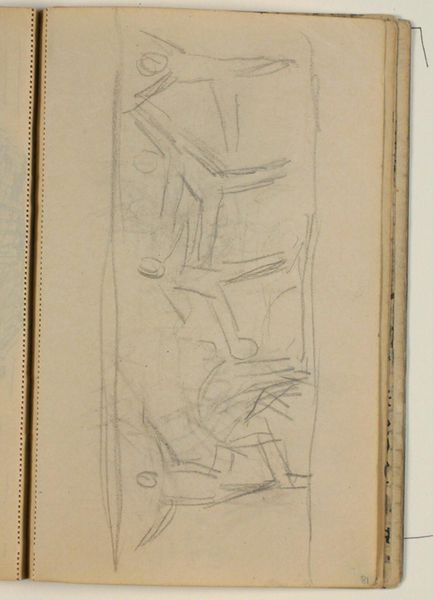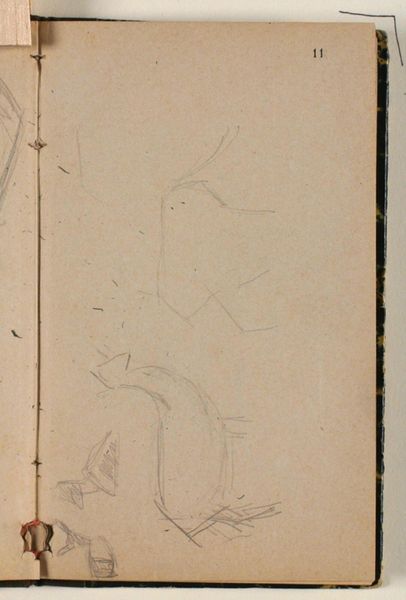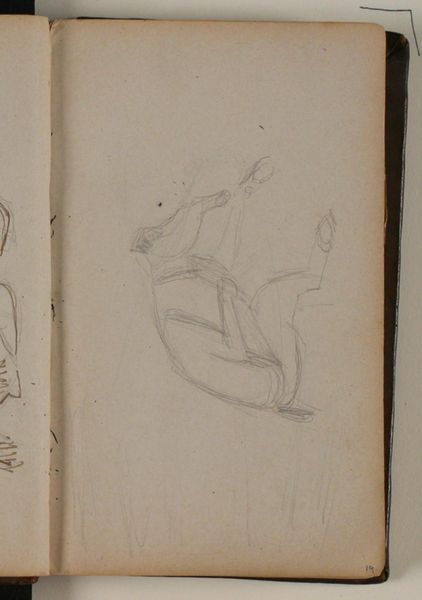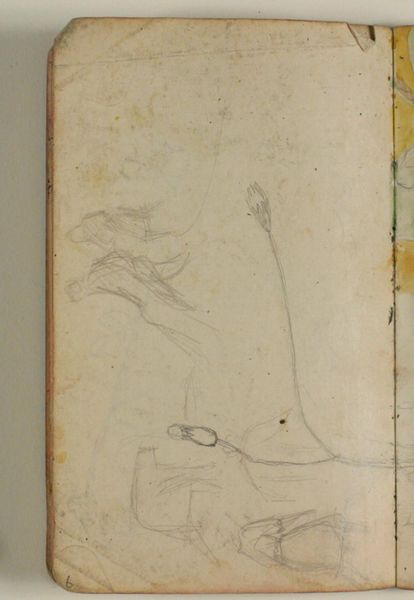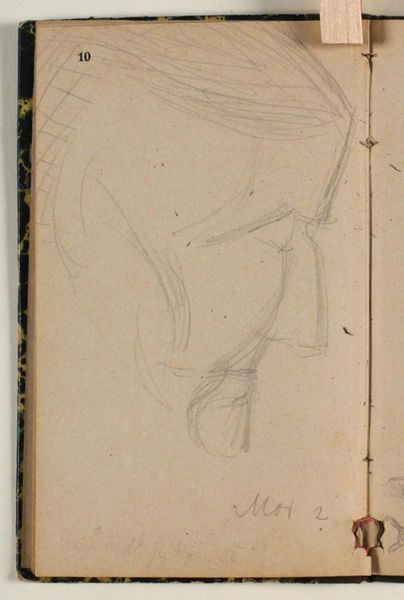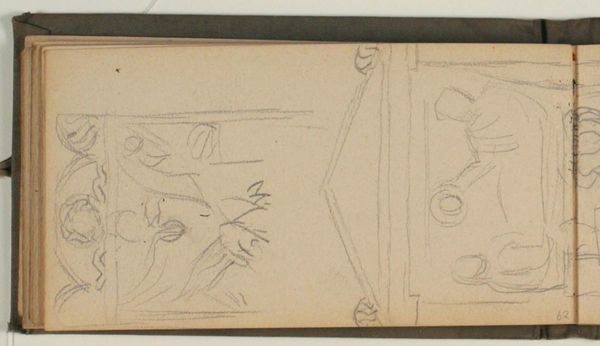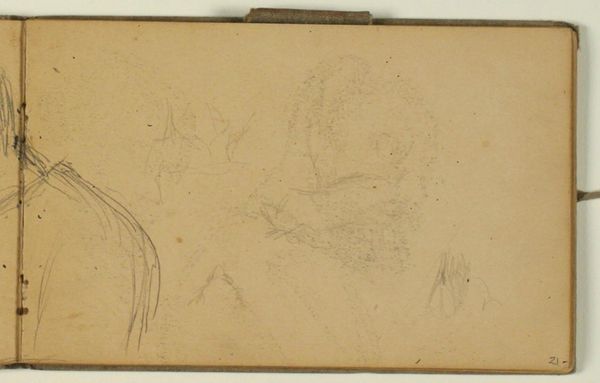
drawing, paper, pencil
#
portrait
#
drawing
#
classical-realism
#
paper
#
pencil
Dimensions: 92 mm (height) x 174 mm (width) (bladmaal)
Curator: This drawing, titled "Studier af antik gravstele," or "Studies of an Ancient Gravestone," was rendered in 1919 by Niels Larsen Stevns. It's a pencil sketch on paper currently residing here at the SMK. Editor: It feels unfinished, almost ephemeral. The soft pencil lines give it a dreamlike quality, as if these figures are fading into the very stone they’re carved upon. What initially drew you to this particular piece? Curator: The stele itself acts as a profound cultural marker, Editor. Gravestones carry deep symbolic weight – thresholds to the afterlife, reminders of lineage, vehicles for memory. Niels Larsen Stevns capturing this feels intentional. It's not just a study; it's an engagement with historical continuity. Editor: I'm struck by the composition. The positioning feels significant—a corner section to the left and the rendering of an androgynous figure who perhaps represents remembrance or mourning, almost cropped into view. It asks a powerful question about who gets to be remembered, and how history centers some figures while obscuring others. Curator: I think that you’re right. Even in its fragmented state, we’re compelled to construct narratives and grapple with notions of power. The androgynous, sexless nature of the statue emphasizes this focus away from any societal labels imposed onto the figures, but instead turns to their symbolic weight. It’s about what this carving communicates, not who the depicted figure *was*. Editor: Yes, it disrupts traditional readings of memorial portraiture. In what context was this piece created, though? Larsen Stevns’ choice of rendering might be key. Was it a commission piece, or did it belong in his own personal archives? Curator: While we can only speculate without written testimony, considering the time period—post World War I—the artist likely aimed to offer a visual contemplation on grief and societal trauma, not a direct answer. I view this particular sketch as one step in the grieving process—a moment for societal reflection on its scars. Editor: It definitely reframes how we should look at these kinds of archaeological sketches in this institution, inviting us to ask: What historical weight is unearthed or buried whenever the past is rendered into a new form? Curator: Exactly, it’s in the layering of the stele's history, its archaeological context, and its re-presentation through Stevns' eyes that meaning truly begins to form. Thank you for joining me in this viewing. Editor: My pleasure. I’ll be contemplating that intersection long after this audio ends.
Comments
No comments
Be the first to comment and join the conversation on the ultimate creative platform.
